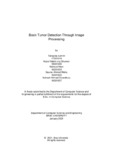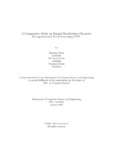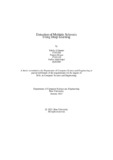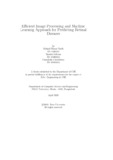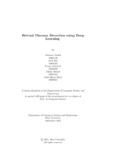Browsing by Subject "Image Processing"
Now showing items 1-10 of 10
-
Bangla optical character recognition from printed text using Tesseract Engine
(Brac University, 2021-01)Optical Character Recognition or OCR is a technology that enables us to detect and extract text from images. In our project, we are designing our OCR system around the Bangla language. This is primarily because, there are ... -
Brain tumor detection through image processing
(Brac University, 2021-01)Begin with image processing for technology to detect brain tumors. I.e. (The identification of tumor/cancer cells from brain images is primarily based on image recognition methods, since these images are complex and human ... -
A comparative study of object detection models for Real Time Application in Surveillance Systems
(Brac University, 2022-01)In this paper, we attempted to give an overview based on thorough research and test ing of the latest object detection methods with an aim to help developers to build a Real Time Responsive CCTV Camera Model. As we welcome ... -
A Comparative study on Bengali handwritten character recognition and prediction using CNN
(Brac University, 2021-01)The transcription Bengali text to digital text is neither very efficient nor accurate. This proves to be a problem because most official work in Bangladesh is traditionally done in Bengali, on pen and paper hardcopy documents, ... -
Detection of multiple sclerosis using deep learning
(Brac University, 2021-01)Accurate detection of white matter lesions in 3D Magnetic Resonance Images (MRIs) of patients with Multiple Sclerosis is essential for diagnosis and treatment evaluation of MS. It is strenuous for the optimal treatment of ... -
Efficient image processing and machine learning approach for predicting retinal diseases
(Brac University, 2020-04)As the computational technology and hadrware system improved over time, the use of neural network in image processing has become more and more prominent. Soon deep learning also caught the attention of the medical sector ... -
Hardware architecture design of face recognition system based on FPGA
(© 2015 Institute of Electrical and Electronics Engineers Inc., 2015)A novel hardware architecture for face-recognition system has been proposed in this paper. In order to make the system cost effective a simple yet efficient algorithm of face-recognition system has been used. We have ... -
A novel lightweight CNN approach for Bangladeshi sign language gesture recognition
(Brac University, 2022-05)The impairment of speech impediment affects 6.9% of Bangladesh’s population. This is a condition in which people cannot communicate vocally with others or hear what they are saying, causing them to rely on nonverbal means ... -
Point of care detection of anemia in non-invasive manner by using image processing and convolutional neural network with mobile devices
(Brac University, 2020-04)A medical procedure is described as non-invasive if there is no necessity for incision into the skin. Invasive methods can often be risky because there is a high chance of infection. That is why the medical sector ... -
Retinal Diseases Detection using Deep Learning
(Brac University, 2022-09)Retina is an important aspect of human vision because it converts light rays into images and sends messages to the brain. We run the danger of suffering long-term harm to the eyesight if we have a problem with our retina ...


